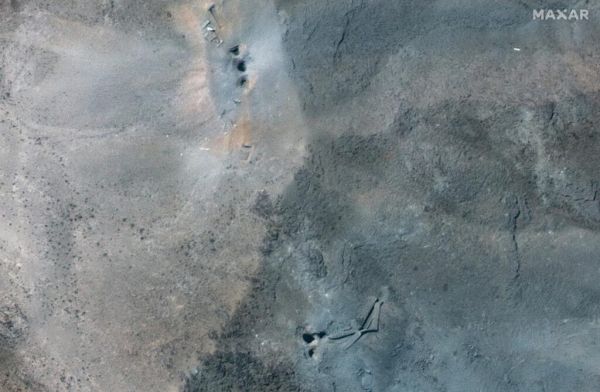
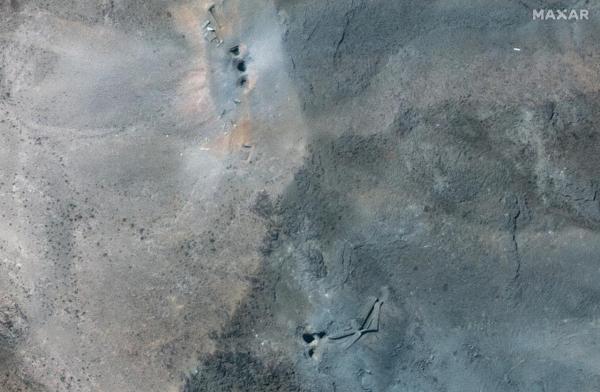
U.S. strikes on Iran’s Fordow nuclear facility were “severely damaged” but did not destroy the underground complex, a senior American official told the New York Times on Sunday.
The official, speaking anonymously, acknowledged that B-2 stealth bomber attacks using bunker-buster bombs failed to eliminate the “heavily fortified” facility despite causing significant damage.
The U.S. deployed six bunker-buster bombs against Fordow using B-2 bombers, while submarine-launched cruise missiles targeted Natanz and Isfahan facilities, amid escalating regional tensions.
This combination of pictures created on June 22, 2025 using handout satellite images released by Maxar Technologies shows Irans Fordow Fuel Enrichment Plant (FFEP), northeast of the city of Qom on on June 19, 2025 (top), and Irans Fordow Fuel Enrichment Plant (FFEP), northeast of the city of Qom, after US strikes on the site June 22, 2025 (bottom). (Photo by Satellite image ©2025 Maxar Technologies / AFP)
U.S. President Donald Trump announced that American forces conducted “very successful” strikes on the Iranian nuclear sites.
Defense Secretary Pete Hegseth described the operations as an “incredible and overwhelming success,” claiming the U.S. has “devastated the Iranian nuclear program.”
“This mission was not and has not been about regime change,” Hegseth said at a news conference along with Chairman of the Joint Chiefs of Staff Air Force Gen. Dan Caine.
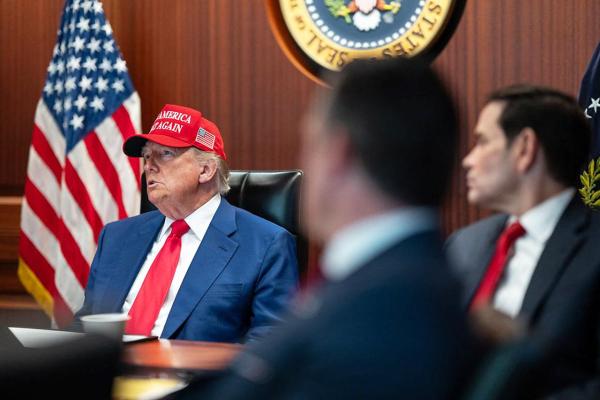
In a photo released by the White House via X, US President Donald Trump is seen in the Situation Room of the White House on June 21, 2025 in Washington, DC. (Photo by WHITE HOUSE / AFP)
Joint Chiefs Chairman Air Force Gen. Dan Caine said over 125 American aircraft participated in the mission, including stealth bombers, fighter jets, refueling tankers, a guided missile submarine, and surveillance aircraft.
Caine said U.S. Central Command (CENTCOM), under the command of General Eric Kurilla, executed “Operation Midnight Hammer, a deliberate and precise strike against three Iranian nuclear facilities.”
It was the “largest” B-2 operational strike in U.S. history and the second longest B-2 mission ever flown, exceeded only by those in the days following 9/11, Caine added.
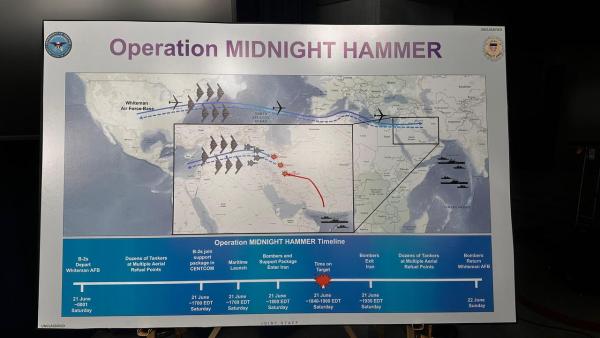
US Secretary of Defense Pete Hegseth and Chairman of the Joint Chiefs of Staff Air Force Gen. Dan Caine speak on the mission details of a strike on Iran during their press conference at Pentagon in Washington, United States on June 22, 2025. (AA Photo)
Hegseth said Trump authorized a “precision operation to neutralize the threats to our national interests posed by the Iranian nuclear program and the collective self-defense of our troops and our ally Israel.”
He added that the plan to strike Iran “took months and weeks of positioning and preparation” to be ready when Trump called.
“Iran’s nuclear ambitions have been obliterated,” Hegseth said, adding, “The operation President Trump planned was bold, and it was brilliant, showing the world that American deterrence is back. When this president speaks, the world should listen.”
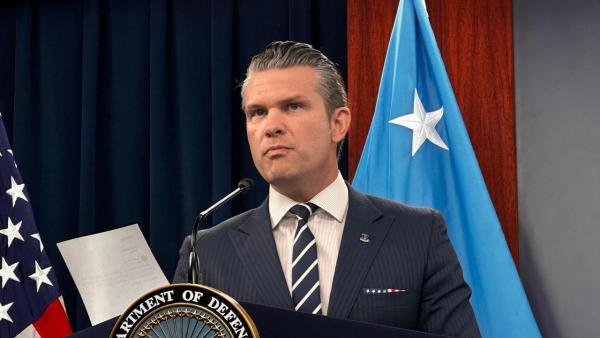
US Secretary of Defense Pete Hegseth attends a press conference at Pentagon in Washington, United States on June 22, 2025. (AA Photo)
Vice President JD Vance said that Washington is “not at war with Iran,” but rather with its nuclear program.
“We’re not at war with Iran. We’re at war with Iran’s nuclear program,” Vance said during an interview with NBC.
Calling the operation “really extraordinary,” Vance said, “What we did is we destroyed the Iranian nuclear program. I think we set that program back substantially.”
The U.S. “actually” wants peace, Vance said, adding, “But we want peace in the context of them not having a nuclear weapons program, and that’s exactly what the president accomplished last night.”

This handout satellite picture provided by Maxar Technologies and taken on June 22, 2025, shows a view of tunnel entrances after US strikes on Irans Fordow Fuel Enrichment Plant (FFEP), northeast of the city of Qom. (Photo by Satellite image ©2025 Maxar Technologies / AFP)
Asked when congressional leaders were notified, and how long before the attacks took place, Hegseth said they were notified after the planes were “safely out.”
“They were immediately thereafter,” he added.
U.S. lawmakers on Saturday blasted Trump’s “unilateral” action to strike Iran without seeking congressional authorization.
The Iranian parliament has approved a measure to close the Strait of Hormuz to naval traffic following U.S. strikes on three nuclear facilities, a senior lawmaker said on Sunday.
“The parliament has concluded that the Strait of Hormuz should be closed,” Major General Esmaeil Kowsari, a member of the parliament’s National Security Commission, said in statements carried by the state-run Press TV.
The Strait of Hormuz is considered the world’s most important gateway for oil transport.
“The final decision in this regard lies with the Supreme National Security Council,” Kowsari added. The Supreme National Security Council serves as Iran’s highest security authority.
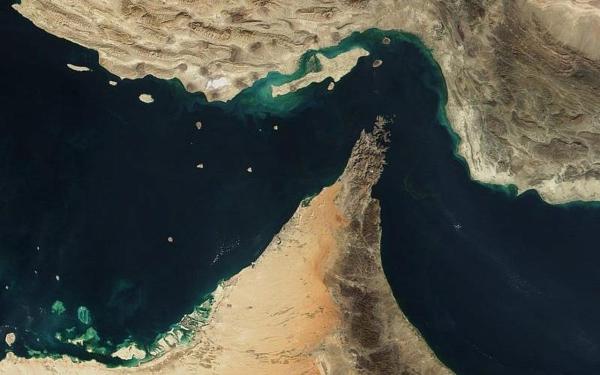
Satellite view of the Strait of Hormuz with Iran on top and Gulf states including the United Arab Emirates below. (NASA Photo)
Senior Russian official Dmitry Medvedev claimed several countries are prepared to directly supply Iran with nuclear warheads, following U.S. airstrikes on Iranian nuclear facilities.
“A number of countries are ready to directly supply Iran with their own nuclear warheads,” Medvedev, deputy chairman of Russia’s Security Council, said in a statement posted on X.
Medvedev said the “critical infrastructure of the nuclear fuel cycle” appeared to suffer minimal or no damage, adding that enrichment of nuclear material and “future production of nuclear weapons” would continue.
He warned that the U.S. is now “entangled” in a new major conflict, this time “with prospects of a ground operation looming on the horizon,” saying the Iranian leadership has emerged politically stronger as a result of the attacks.
“The people are rallying around the country’s spiritual leadership, including those who were previously indifferent or opposed to it,” he said.
He argued that Trump has pushed Washington into another war and dismissed any prospects of the U.S. president receiving the Nobel Peace Prize.
Medvedev also claimed that the “vast majority of countries” oppose the actions of both the U.S. and Israel.
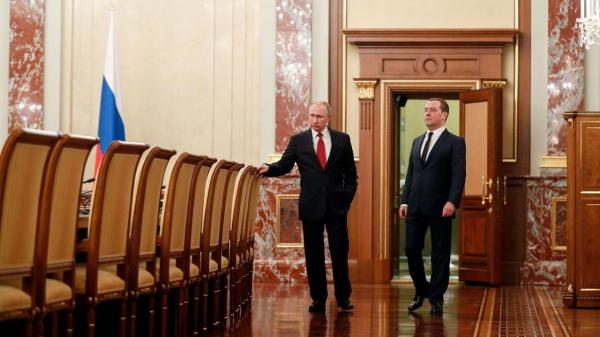
Russian President Vladimir Putin and Medvedev speak before a meeting with members of the government in Moscow. (AFP Photo)
The attacks came as the latest escalation in a U.S.-backed Israeli military assault on Iran since June 13, prompting Tehran to launch retaliatory attacks on Israel.
Following the U.S. strikes, Iran called on the U.N. Security Council to hold an emergency meeting to condemn the U.S. aggression and to hold accountable those who violate international law.
Israeli authorities said at least 25 people have been killed and hundreds injured since then in Iranian missile attacks. Meanwhile, in Iran, 430 people have been killed and over 3,500 wounded in the Israeli assault, according to the Iranian Health Ministry.